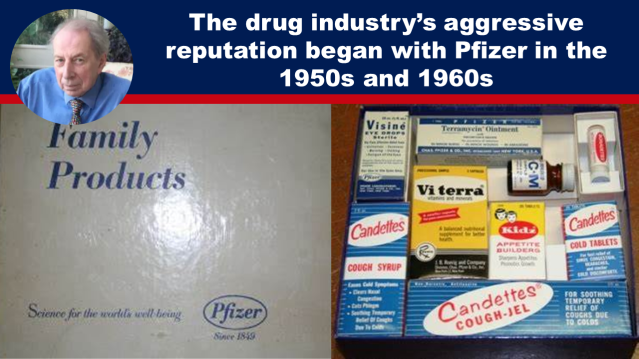The drug industry’s aggressive reputation began with Pfizer in the 1950s and 1960s
Dr. Vernon Coleman’s track record of spotting health dangers is second to none. Since the 1970s, when his first two groundbreaking books (‘The Medicine Men’ and ‘Paper Doctors’) were published, Dr. Coleman has been gaining friends among patients and enemies among doctors and drug companies.
In ‘The Medicine Men’, Dr. Coleman drew attention to the dangerously close relationship between the medical establishment and the pharmaceutical industry.
The following article is taken from `The Medicine Men’ by Vernon Coleman, first published in 1975 but now available again.
Let’s not lose touch…Your Government and Big Tech are actively trying to censor the information reported by The Exposé to serve their own needs. Subscribe now to make sure you receive the latest uncensored news in your inbox…
During the postwar years, millions of pounds were spent on developing new and more effective antibiotics. In 1955 Beecham began to study penicillin and started to look for a penicillin which could be given orally and which would have a wider range of activity than the penicillins already available. Their research proved more fruitful than they could have hoped for. In 1957 Beecham scientists isolated the nucleus of the penicillin molecule and they had at their fingertips a whole new range of drugs. In 1959 they made their first semi-synthetic penicillin.
One of the American companies which had helped with the production of penicillin during the war was Pfizer, a chemical company which also discovered the extremely useful antibiotic oxytetracycline.
At the time of this discovery, Pfizer did not themselves market drugs but as a result of this success they decided to do so; they spent an estimated half a million dollars in two months on promoting their new drug. In two years, in the early 1950s, they spent seven-and-a-half million dollars on advertising, using telegrams, telephone calls to doctors, direct mail shots and hospital displays. It was the first time a company had used ordinary commercial methods to sell a drug to doctors. By 1951 Pfizer had three hundred representatives, or “detail men,” and their brand had a quarter of the broad spectrum antibiotic market, which showed that their techniques had paid off.
Pfizer raised the level of competition in the drug industry and grew rapidly. Their aggressive methods have certainly brought them success but they have also brought controversy. In 1961 the British Minister of Health, Enoch Powell, decided that Pfizer were charging too much for their tetracycline, and he took the unusual step of invoking the Patents Act and importing antibiotics from Italy where there are no patents on drugs. A good deal of bitterness followed these affairs and the drug industry’s evil image seems to date from this era.
About the Author
Dr. Vernon Coleman MB ChB DSc practised medicine for ten years. He has been a full-time professional author for over 30 years. He is a novelist and campaigning writer and has written many non-fiction books. He has written over 100 books which have been translated into 22 languages. On his website, www.vernoncoleman.com, there are hundreds of articles which are free to read.
Featured image: Pfizer Family Products box packaging (left) sample box contents (right) pre-1972

This article has been archived for your research. The original version from The Exposé can be found here.


